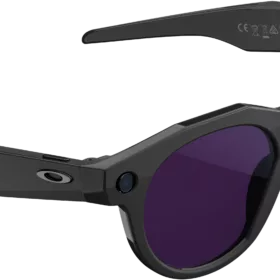What are the key factor to consider when choosing Smart Glasses?
Smart Glasses are the best devices to exploit the advantages of Augmented Reality, especially in the case of jobs that require free hands. Augmented Reality glasses guarantee both freedom of movement and access to information and tools that the worker needs: digital resources; work instructions and collaboration tools, all viewable within one’s field of vision and increased thanks to Augmented Reality. We propose 5 factors to consider when you are buying Smart Glasses.
The first factor is the choice between models with a monocular or binocular design. It is good to move towards a monocular model, that is with a single screen for one eye, when you need to view a limited set of data and need an economic and light solution. Binocular models instead are the best choice if you need a large viewing area or a 3D experience.
The second factor to consider is the weight of the glasses. People tend to be very sensitive to weight on the head and nose, which is why many glasses are designed with an architecture that reduces the weight of the headset by using a compact controller that is easier to manage, or by limiting the weight of the battery to the detriment of the duration.
The third factor, always linked to design, is the comfort of Smart Glasses. If the devices are used for most of the working day, they must adapt to other accessories that the worker uses, such as protective glasses or work helmets; some types of Smart Glasses are designed to meet these needs. It is therefore important that they are comfortable for long periods of time and that they do not create blind spots, so that operators can safely move around in their environment.
The fourth factor of choice is related to the type of battery. The actual battery life is dictated by two variables: the capacity of the battery in the device and the application running on the device. Larger devices will have larger batteries and a higher cost. All Smart Glasses support external batteries that can be connected by a cable to extend the period of use. Some models provide the possibility of “hot swapping”, ie they allow you to change the batteries while doing your activities.
Of course, the way in which glasses are used also affects battery consumption speed. Applications such as using the video camera and streaming content over WiFi will have a greater influence on consumption than, for example, the consultation of work instructions or technical documentation. Finally, the fifth factor is the most complex, it is the size and quality of the display.
For Smart Glasses, displays can be measured in different ways. To begin with, there is the size of the “virtual display”, which will be given with the number of inches at a certain distance. The detail offered by these displays is measured in the same way as a traditional display through resolution, with a designation such as WVGA (854 × 480) or 1080p. The monocular Smart Glasses tend to have smaller screens and therefore more suitable for displaying contents with 2-3 key information. Binocular devices have larger screens and offer a more comfortable viewing experience for identifying large amounts of information, such as images, videos, documents and more.
Once the five key factors for the purchase of Smart Glasses have been identified, it is important to consider the intended use: the use case is probably the most important analysis in the choice of Augmented Reality glasses since each model has some characteristics that make it more or less suitable for some sectors and fields rather than others. Compare the technical specifications of the Smart Glasses, and get an idea of what could be the most suitable for your needs and the most suitable for your company.




